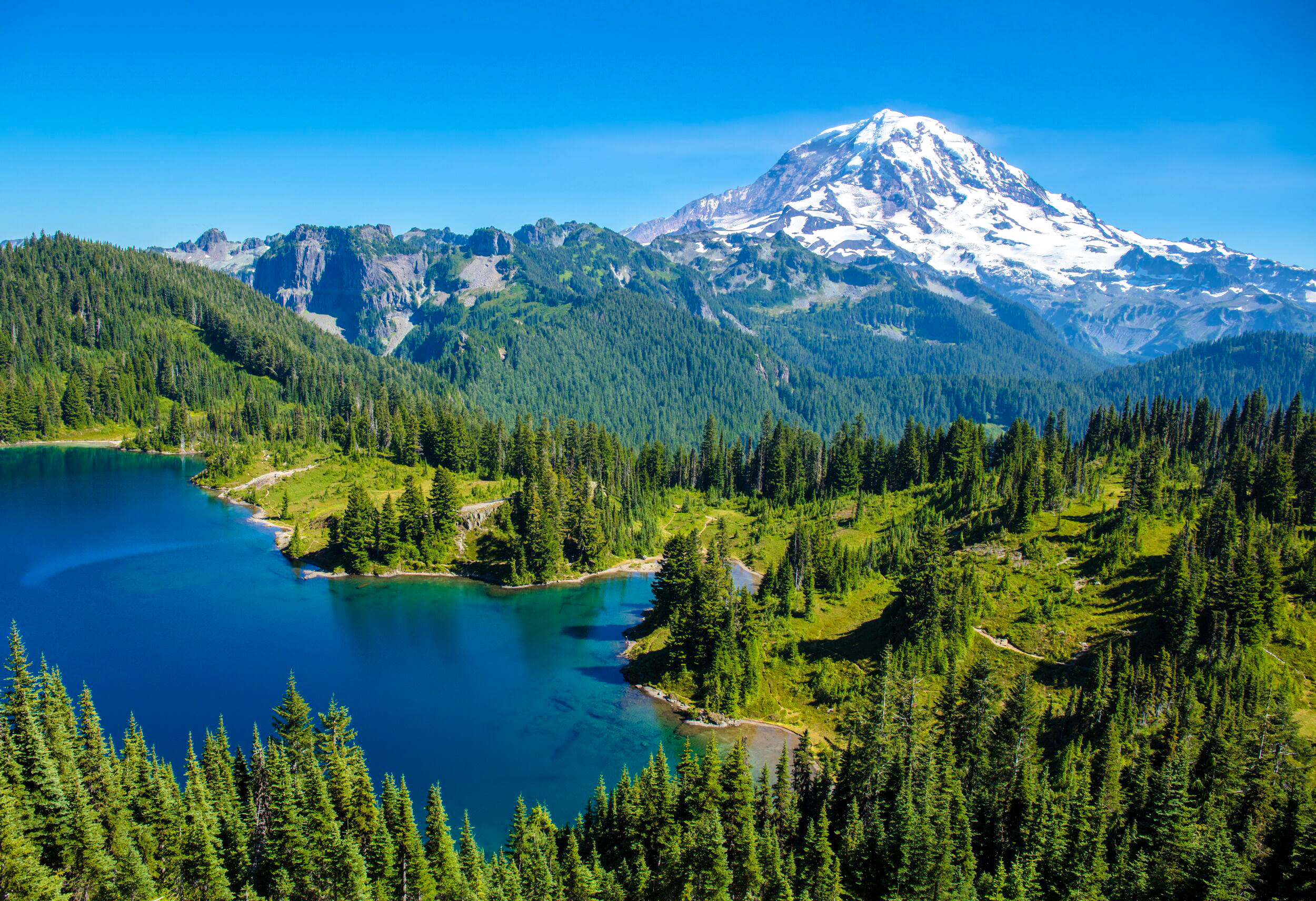Best time to visit: Late Summer
Recommended Hikes: the Burroughs, Pinnacle Saddle, Eunice Lake, Comet Falls, Summer Land Meadow, Skyscraper Peak
Ideal For: Hiking, Backpacking, Camping, Auto-Touring, Mountain Climbing
Where to stay: Paradise, Longmire, or Sunrise areas
Useful Info:
Dogs - the general rule for dogs in national parks is that they must be leashed and are only allowed on paved areas, which includes parking areas, roads, and front country campgrounds. Dogs are not allowed on park trails, even when leashed.
The people of Washington love the outdoors and they take advantage of nearby Mount Rainier - expect big crowds throughout the park, especially on weekends and during summer. Wait times at park gates can exceed an hour on really crowded days.
It takes a long time to drive around the mountain. The drive from Sunrise to Paradise will take about an hour and a half and may include a long wait at the park entrances. Try to devote a full day to each area to cut down on daily drive times.
Snow lasts well into summer on the higher elevation hiking routes. Many of the hikes discussed in the hiking section below are only doable during late summer or with snow hiking skills.
Mount Rainier forms its own clouds! For this reason, it is often hidden behind them. Visit in late summer for the best weather, but also look to enjoy wild flowers, hikes, and lakes when you can't see the peak.
Some of the larger mammals in Mount Rainier include deer, mountain goats, and black bears. Look for goats in the high-elevation, rocky areas of Sunrise, and look for bears in meadows throughout the park.
There is no drinking water available in the Mowich Lake area, be sure to bring plenty of water if you want to do the Eunice Lake hike. Drinking water is available throughout most of the rest of park, bring your bottle to fill up.
There is limited shuttle service in the Paradise area for overflow parking. The shuttle is free and necessary to use if you can't find parking.
Mount Rainier is the largest volcano in the Cascade Range. The peak is awe-inspiring and is covered by massive glaciers. Surrounding the mountain on all sides are towering volcanic crags, ridges, lakes, and waterfalls. Visiting in late summer provides the best likelihood of good weather and views of the mountain unobstructed by clouds. The park is open year around, but much of the park road is closed when there is snow.
Must See Attractions:
Paradise Park - A wide open meadow with outstanding views of Rainier’s south face. There are multiple hiking trails that make their way towards Rainier's glaciers and viewpoints of waterfalls. Expect this area to be quite crowded with limited parking.
Reflection Lakes - Just east of Paradise and right next to the main park road. The lakes are at their stillest and most reflective in the early morning.
Grove of the Patriarchs - If you like big trees, the Grove of the Patriarchs is worth seeing. There is a cool system of boardwalks in the heart of the grove that is fun for all ages and a nice place to relax. Visit in the morning or evening for smaller crowds.
Sunrise - Located on the north eastern side of the park, Sunrise offers the best network of day hiking options in the park. It's also is the highest accessible elevation you can reach in a car and it's great for admiring the largest glaciers on Rainier. Get here in the morning to enjoy the rising sun shining on the mountain.
Mowich Lake - Found in the remote western region of the park - this area is accessible via a dirt road from the town of Fairfax, WA. There are several hiking routes here, including Eunice Lake which is one my favorite destinations in the park (read more about the Eunice Lake hike below). This part of the park is closed during winter.
Where to Stay:
There are two rustic hotels within the park boundaries, at Paradise and Longmire. See more information about all lodging options near the park here.
There are developed campgrounds in all three areas of Mount Rainier. Cougar Rock Campground, near Paradise, is the largest and it can be reserved online in advance here. The Ohanapecosh Campground can also be reserved in advance here and its location is ideal for seeing both sides of the mountain. The White River campground is first-come-first-served only, located in the Sunrise Area.
Hiking in Mount Rainier:
Mount Rainier has a ton of great day hikes, overnight backpacking routes, and for the truly ambitious, the peak of Rainier itself. The Wonderland Trail goes all the way around the mountain, usually tackled as a 5-7 day backpacking trip. The below are my recommendations for day-hikes, but I recommend reading up on the peak and the Wonderland Trail if those interest you.
the Burroughs - Located in the Sunrise area, the Boroughs are a great place to admire Rainier's glaciers and to see mountain goats. The hike climbs up a set of three volcanic hills on it's way to the highest day-hiking elevation in the park. Read more about the Burroughs hike here.
Summerland Meadow - This is a day hike on a section of the Wonderland trail (the Wonderland Trail goes all the way around Mt Rainier). Most of the day-hike is through forest, but it opens up when you reach Summerland Meadow. You can continue past Summerland Meadow to see a waterfall and a small turquoise lake surrounded by volcanic ridges. Read more about this hike here.
Skyscraper Mountain - This hike is great for escaping the crowds and reaching a peak with a great view of Rainier. The trailhead starts at the Sunrise visitor center and shares a route with the Burroughs hike until it breaks off onto the Wonderland Trail. From here it crosses Berkeley Park which is awesome in its own right, before a steep climb to reach Skyscraper Peak. I highly recommend this hike, it might be my favorite in the park! Read more about it here.
Pinnacle Saddle - This is a great hike up a volcanic ridge on the south side of the mountain. The trailhead starts across the road from Reflection Lake and it offers great views of Rainier and Mt Adams once you reach the saddle. Read more about the hike here.
Comet Falls - Arguably the best waterfall in the park - Comet Falls is a great endpoint for your hike, or you can continue on to Van Trump Park. I recommend hiking to Comet Falls, but Van Trump Park can be skipped in favor of Paradise Park or Berkeley Park. Read more about the hike here.
Eunice Lake - If you make it to the remote west side of the park, Eunice Lake is the hike to do. It's a beautiful area complete with a retired fire lookout and Eunice Lake resting beneath Rainier on the horizon (featured in the cover photo of this post). There is no drinking water in this area and it's about 15 miles of dirt road driving to get here. Read more about the hike here.
A few hyperlapses I shot in Mt Rainier National Park. Locations in order of appearance: the Burroughs 2, Shadow Lake, Eunice Lake, Summer Land, and the Burroughs 1




